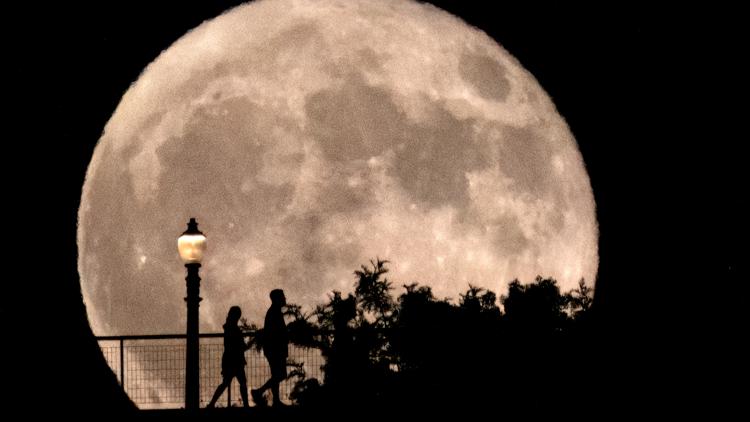This will also be the second of four consecutive supermoons this year.


WASHINGTON — Turn your eyes to the sky Tuesday night for an extra special full moon with a celestial trifecta.
Tuesday's harvest moon, or closest full moon to the autumnal equinox, will also be a supermoon, appearing larger and brighter in the night sky. If that wasn't enough, there will also be a partial lunar eclipse.
The full moon and lunar eclipse will be Tuesday night, Sept. 17, into Wednesday morning, but it'll appear full from about Monday evening until Thursday morning.
What time is the lunar eclipse?
The lunar eclipse will begin when the moon enters the Earth's partial shadow at 8:41 p.m. EDT, but it will be difficult to notice until the top edge of the moon begins entering the full shadow at 10:13 p.m. EDT, according to NASA.
The partial lunar eclipse's peak will occur at 10:44 p.m. Eastern with only the top 8% of the moon in the Earth's full shadow, the space agency explains. The moon will exit the full shadow at 11:16 p.m. and the partial shadow at 12:47 a.m. Eastern Time on Wednesday morning.
What is the harvest moon?
The harvest moon is the full moon closest to the autumnal equinox. This year, the equinox falls on September 22.
According to NASA, the term dates back to before electricity, when farmers depended on the moon's natural light to harvest their crops late into the night. The full moon was particularly important at the beginning of fall, when harvests are the largest.
How many supermoons are there in 2024?
The moon's orbit around the earth is an ellipse, not a perfect circle. A full moon is considered a supermoon when it comes within 90% of perigee, its closest point to Earth.
According to NASA, the closest supermoons appear "about 17 percent bigger and 30 percent brighter" than the furthest, faintest moon of the year.
Supermoons happen only three or four times a year. There are four this year. Tuesday's supermoon will be nearly 3,000 miles closer than August's "blue" supermoon. October’s supermoon will be the year’s closest at 222,055 miles (357,364 kilometers) from Earth, followed by November’s supermoon at a distance of 224,853 miles (361,867 kilometers).
.png)









 English (US) ·
English (US) ·